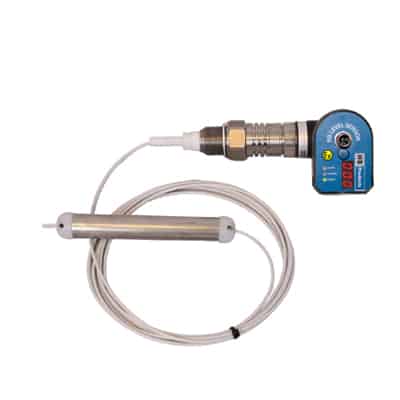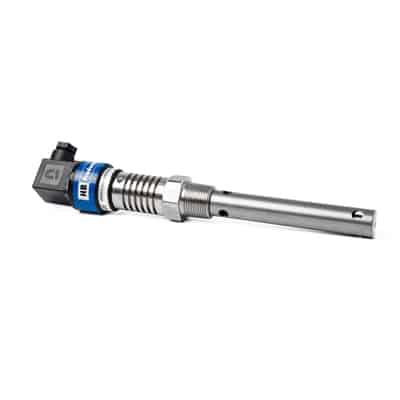Applications
- Process plants
- Storage tanks
Intrinsically Safe design:
Intrinsically Safe (IS) sensors are designed and wired to work on such a low current and voltage that it cannot possibly ignite flammable material. By limiting the energy available within the defined hazardous area, electrical equipment can operate safely even amid hazardous mixtures of gasses.
The HBLC sensor is designed for many kinds of liquidsbased on the dielectric constant. The liquid type is selected in the HB-Tool.
The measuring principle and the influence of the dielectric constant:
Capacitors are designed with minimum two conductors, where one of them is electric isolated. The dielectric constant are key for operation of capacitors, the capacity size is measured in pF.
Dielectric constant (Relative permittivity) is a unique value on a scale of 1 to 100. The value can be seen as a media’s DNA, because it`s unique and related to the molecular structure and polarization.
The Dielectric Constant is always greater than or equal to 1. The larger the dielectric constant, the more charge can be stored (like a battery).
The dielectric constant changes with temperature and pressure, the sensor comes with automatic temperature compensation calibrated/adapted to the measured media.
Type of switches:
Sensor type Liquid type Dielectric constant
HBLC-CO2 CO2(R744), Butane (R600), Isobutane (R600A), Propane (R290) 1.5-2.0
HBLC-OIL PAO oil, Mineral oil, POE oil, PAG oil 2.0-4.0
HBLC-HFC R507, R410a, R407c, R404a, R22, R32, R134a, R1234yf, R1234ze 4.0-10.0
HBLT-A2 NH3, Water, R717, R718, Alchohol 10.0-80.0






